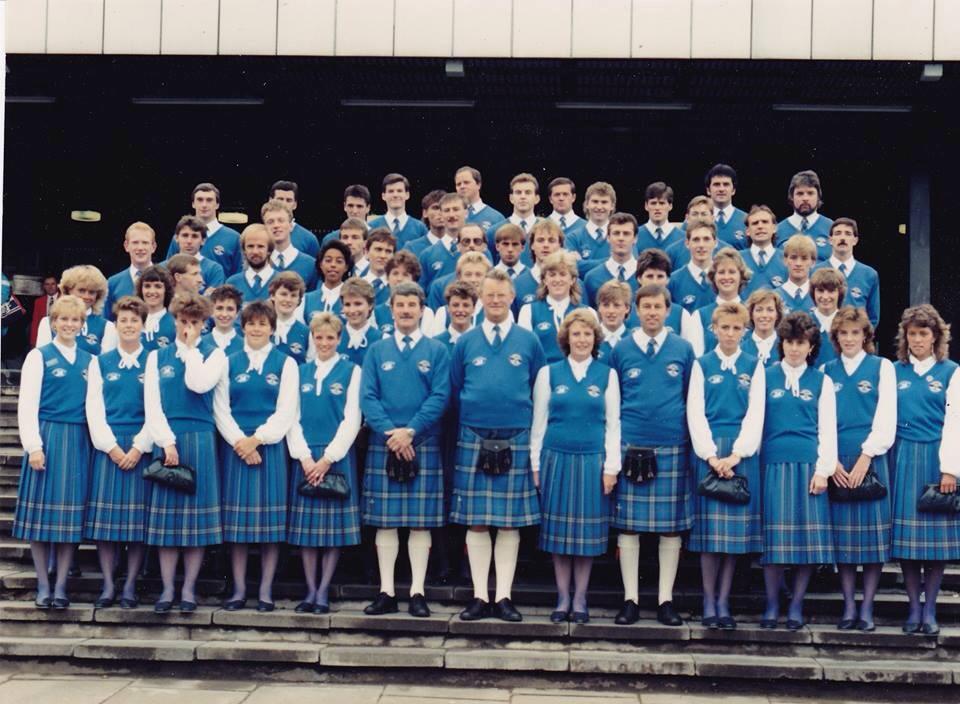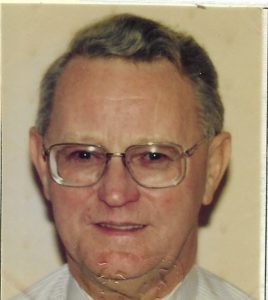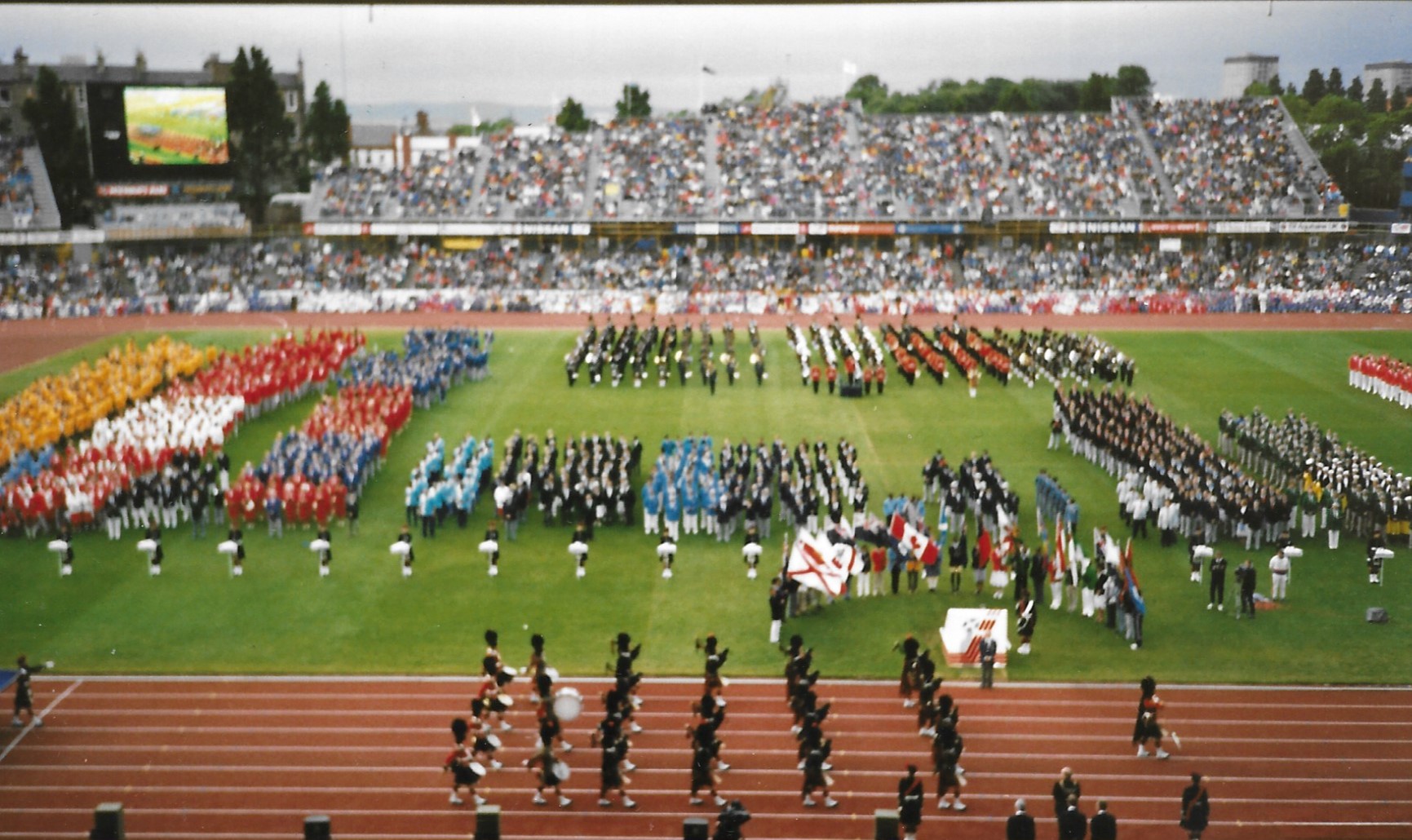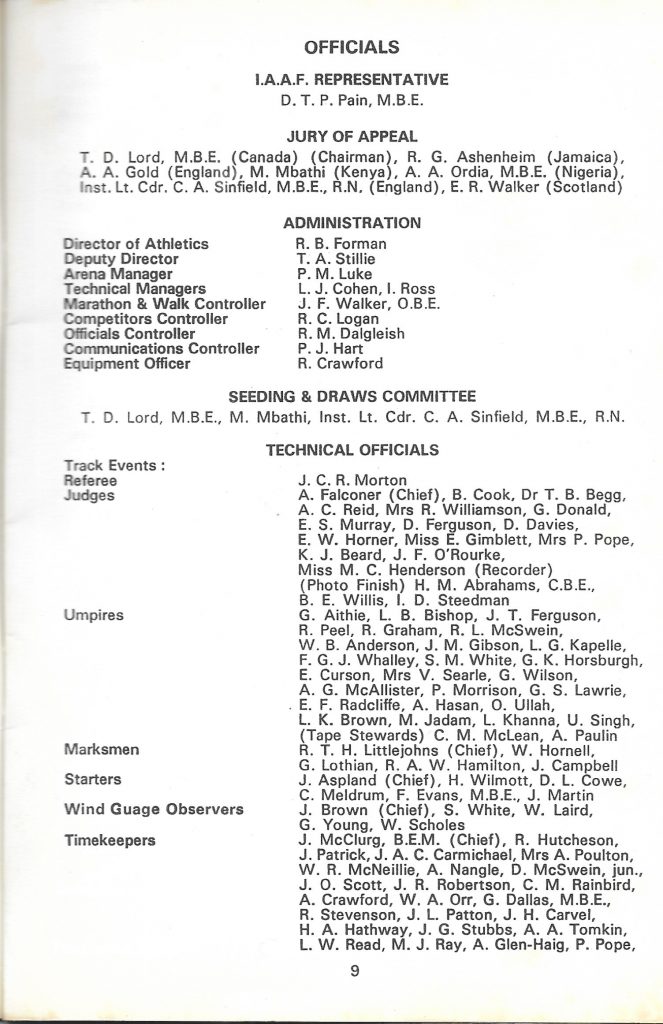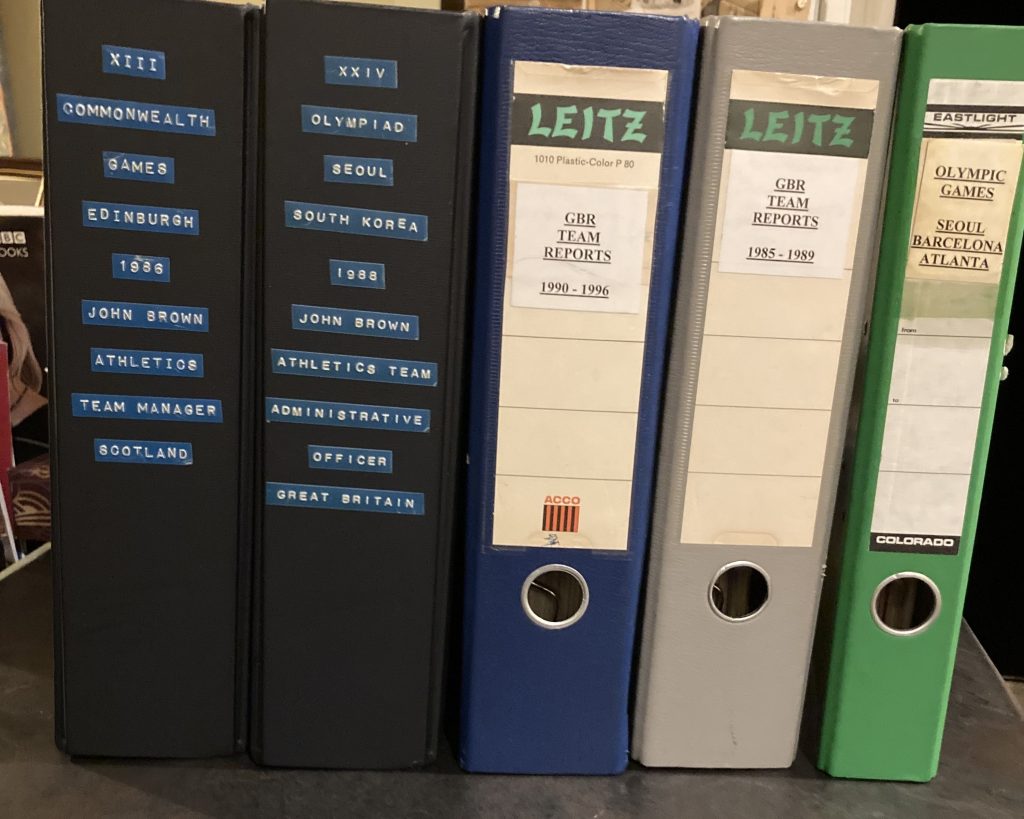The picture above is one of the best known Commonwealth Games group photographs, appearing on websites, in magazines and in newspapers. It was of course taken before the 1986 Games in Edinburgh and almost all are easily recognisable to athletes and officials, and indeed to many Scottish team supporters. But if you asked people to point out John Brown, not many would get it right and yet he was possibly the most important and sought after administrator in Scottish teams at several Games and fixtures and was also a vital cog in the GB wheel at four Olympic Games which meant officiating with a number of British teams in the run-up to these events. He was ‘selected’, if that is the appropriate word, for more major Games and international fixtures than any athlete. In the photograph he is right in the middle of the front row above, between John Hamilton and Hilda Everett. We are indeed fortunate that he was an immaculate record keeper and organiser and his documentation has been passed to John Mackay by his son, another John Brown, to help us put together this record of his career in the sport.
We can start with information extracted from his own account of his life and career.
Born on 2nd June 1932, his father was a former pilot in the Royal Flying Corps but was by then back in civvy street and working as a janitor which involved moving around the city of Glasgow as his employment demanded. John could remember the outbreak of World War 2 on 3rd September 1939.
John had been a pupil at Whitehill Senior Secondary School in 1943, left school in 1947 and was employed by Glasgow Corporation Housing Department. His father had been a sprinter of some ability with Maryhill Harriers and had even raced against Eric Liddell. John wanted to follow in his footsteps and joined Maryhill Harriers on 26th March 1946 little knowing where it would take him. What follows is his beginnings in the sport in his own words. Because it contains some information about the sport in general at the time and indeed some social history as well as details of his career we have kept in some information not strictly relevant to his athletics. eg How many of the present generation would know of Junior and Senior Secondary Schools? Or about National Service? Or about running cross-country without a shower afterwards?
“In June 1948 I had my first open handicap event as a youth at Glasgow Transport Open Sports at Helenvale Park. My final event was at Cowal Highland Games in August 1959. During this period I had 504 competitive races. Summer training took place at Balgray, Kelvinside Academy’s sports ground on Great Western Road. In the wintertime our HQ was in Maryhill Baths’ communal wash house. Every Tuesday and Thursday evening and on a Saturday afternoon we had training sessions. After coming in from a muddy cross-country run on a good occasion we could have a cold shower but, on a bad day there was no shower and we had to go home dirty and sweaty. In the summer of 1948 the Olympic Games were held in London. Maryhill Harriers organised a trip to the Olympiad and I had a truly wonderful time there. The opening and closing ceremonies were held in Wembley Stadium.
In 1949 I became the Junior captain of Maryhill Harriers. In June the club championships were held in the public park in Rothesay when I won the 100 and 220 yards championships. Later in that year I also won the 440 yards championships. Around this time I became Assistant Secretary of the Scottish Amateur Wrestling Association which came about through a Tom McMillan of Maryhill Harriers who was secretary of the association at that time. Tom was also secretary of the Bute Highland Games and again roped me into being Assistant Secretary of the Games, an appointment that lasted for two years.”
John went off to do National Service with the Air Force in November 1950. After ten weeks square bashing, which was par for the course for all who did their National Service, John was passed out as the best recruit of the 108 recruits. His organisational skills which had been developed to some extent at the Bute Games, was posted to the RAF Record Office in Gloucester he rose very quickly through the ranks. A very successful and enjoyable period was spent with John returning home after the two years and starting work back at Glasgow Corporation and returning also to athletics.
In 1955 he won the Glasgow Police Sports handicap 220 yards and also won the Maryhill Harriers Davidson Trophy which his father had won in 1921. 1956 was his best season in athletics with a first in the 220 and second in the 100 at the YMCA Championships and again at Shotts. Then in the Dunbartonshire County Championships he was again first in the 220 and second in the 100. He went on be a fairly successful sprinter finishing second in three 120 yards invitation races and then at Cowal won the 220 yards on the Friday night and also in the Saturday event. 1958 was his final season as a competitive athlete.
John’s Photograph of the Opening Ceremony Parade at Meadowbank in 1970
John again:
“When I stopped competing in athletics in 1959, I became an official of the Scottiah Amateur Athletic Association. Starting at Grade 3 I worked my way up to Grade 1. The 9th Commonwealth Games was awarded to Edinburgh where I was one of the Senior Technical officials. By this time my speciality was the recording of wind speeds required for the ratification of record performances. Because of the difficulty of finding officials in 1969 I was sent to officiate at the August Bank Holiday in London, It was a two-day fixture – Great Britain v France. On the Saturday it was held at the White City Stadium. This had been the premier athletics stadium in Great Britain where the 1908 Olympics had been held. This was the last day that a meeting had been held there. The second day of the meeting was held at Crystal Palace which became the new home for athletics in London.I did not find any suitable candidates south of the border so I returned home and eventually put a team together. The IXth Commonwealth Games took place in Meadowbank Stadium. It was a tremendous ten days of sport and my team of five enjoyed the atmosphere . Throughout the Seventies I continued to officiate at many meetings from domestic championships to the internationals which came to Scotland.”
Officials List from the 1970 Empire & Commonwealth Games programme
When he was elected to the SAAA General Committee in 1979 his qualifications as an official were as a Grade 1 Track Judge. Wind Gauge Operator and Marksman, and in 1979 he was a Grade 3 Timekeeper. He was by then also a member of Garscube Harriers. To these his experiences as an official and, mainly, administrator in international fixtures and a very welcome addition to the governing body. Within two months he had been elected by the committee to the post of Assistant Secretary in succession to Duncan McSwein. He held this position until December 1982, the start of the Association’s Centenary Year, when he was elevated to the position of Treasurer where he was successor to George Donald. He held this position until the formation of the new Scottish Athletics Federation in 1992 which replaced no fewer than seven governing bodies covering athletics, cross-country running and hill running.
He had ten years on the Council of the British Amateur Athletic Board. This was a position in which he could influence affairs at British level whereas the President of the SAAA usually only had three years on the Board where as one former President said, “You spend one year playing yourself in, one year when you can do something, and one year on your way out!”
We have had a preliminary look at John’s family background and his own early interest in the sport, how it developed and how he became an administrator and officials at International level. He has left his documentation clearly labelled and organised and the intention now is to keep his organisational pattern to show how his career really blossomed.
